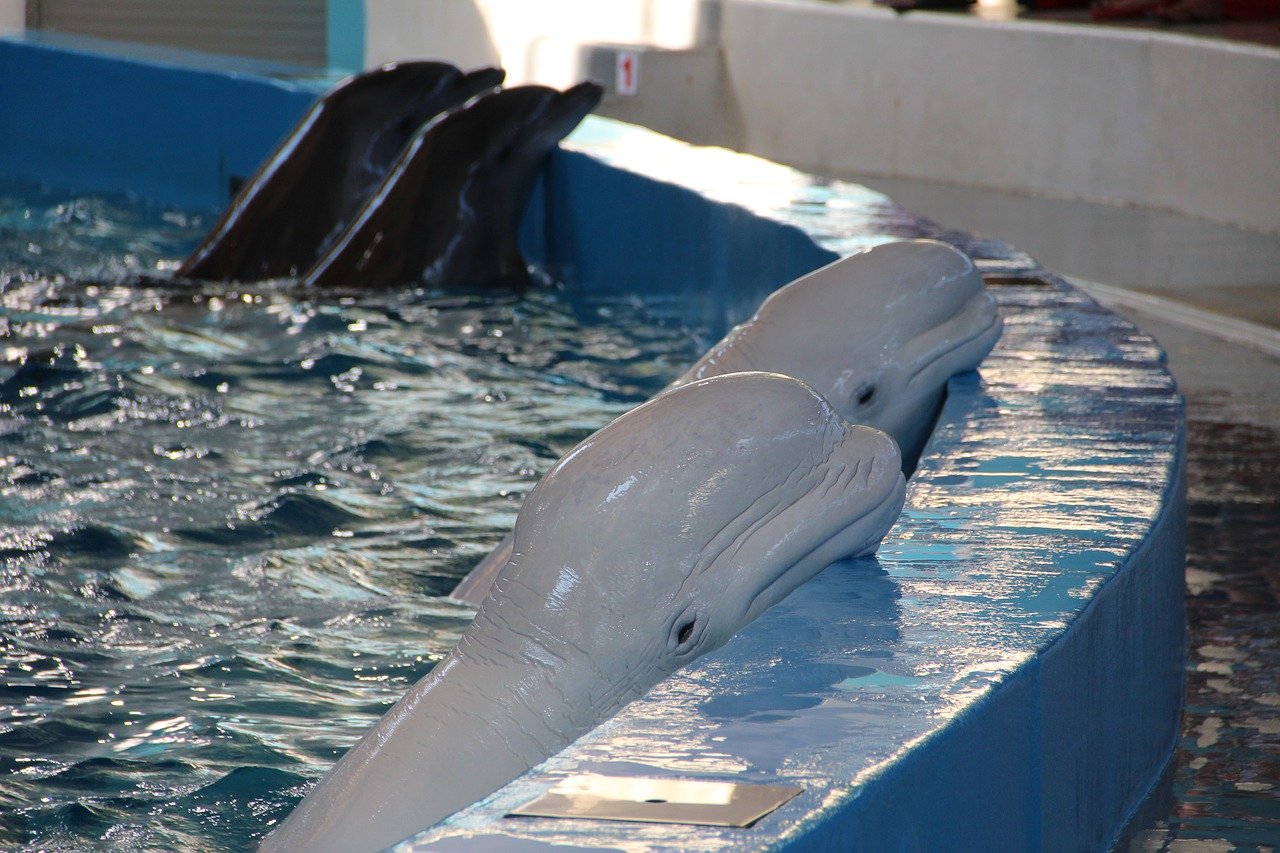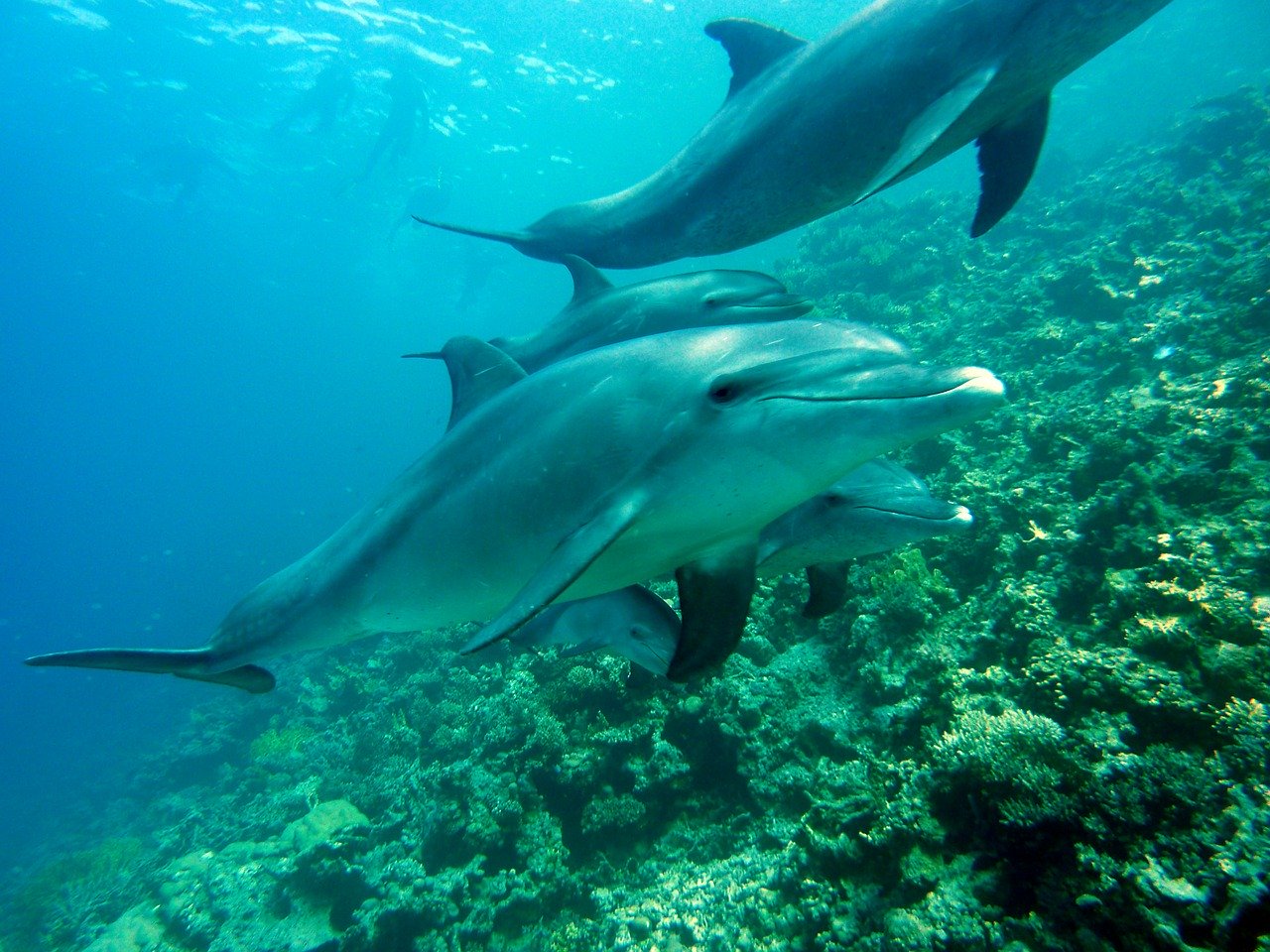I have learned many things about the plight of dolphins and how we can help. There are several reasons why it’s not a good idea, even though I am guilty of this.
Back in December of 2019, some friends were visiting us in Mexico and there were different things we wanted to do such as take a trip on a catamaran and swim with dolphins. There were other activities involved such as snorkelling. I was more interested in being on the catamaran and, since I am not a swimmer, I did not want to swim with the dolphins. I overcame my fear and I admit it felt exhilarating at the time.
Since we have a ban on travelling right now, this might be a good time to learn how we are hurting our dolphins so that when we are ready to travel, we might reconsider taking excursions involving them.
History of Swimming with Dolphins
Swimming with dolphins gained popularity in the 1980s and ‘90s because of how humans felt while experiencing this. It is thought to be therapeutic and help with depression.
In the 1960s, a string of privately owned dolphinariums (aquariums where dolphins are kept and trained for public entertainment) sprung up. Criticism and animal welfare laws have forced them to close their doors. Despite this, there are more that exist around the world today which still attract many visitors, resulting in a multibillion-dollar trade.
Animal rights groups strongly oppose the captivity and the plight of dolphins, citing poor conditions that lead to the loss of animals.
The Appeal of Dolphins
Most of us older folks can remember “Flipper,” the loveable dolphin and the star in the television series from September 1964 to April 1967. It has been equated to Lassie in its appeal. Flipper’s role is to protect the park from criminals and to perform rescue missions in dangerous situations.

Dolphins in Captivity
The show became an instant hit and everyone wanted to see dolphins walk on their tails or leap high in the water through loops. Dolphinariums began to spring up everywhere. The state of Mexico, a popular tourist destination, has 19 swim-with-dolphins facilities. Dolphin Isla Mujeres is the biggest dolphinarium in Latin America.
Richard (Ric) O’Barry pioneered the underwater training of Flipper (by the way, they were all females) Over the show’s run there were five – Patty, Kathy, Scotty, Squirt, and Suzy – but Suzy was used the most and formed a close bond with O’Barry.
At the time of the show’s run, O’Barry did not know the repercussions of dolphins in captivity but when Suzy, (who was retired by then) died in his arms, he was convinced she was unhappy and committed suicide. At that moment, he vowed to do everything in his power to stop the plight of dolphins.
In 2009, O’Barry was quoted as saying a live dolphin is worth more than $154,000 and the industry is worth about $2 billion. No wonder those in the business want to keep it.
Ric O’Barry is an activist who, every year travels to Taiji Japan, attempting to put an end to the plight of dolphins and the thousands that are still slaughtered there or are taken into captivity.
Taiji Japan
In Taiji Japan, there is a dolphin fishery. Taiji is a small fishing port and, to the casual observer dolphins are loved there. Each year thousands of them swim along the coastline and tourists are drawn to them, often taken out to spot pods to watch them.
Taiji is the largest supplier of dolphins to many dolphinariums and seaquariums, and the many ‘swim with the dolphin’ excursions globally. Unfortunately, it also slaughters them.
At the end of the summer, they capture the dolphins in unbelievably cruel conditions, pen them like cattle, cull them for the best of the crop, and then supply the dolphins to the dolphinariums. They inhumanely slaughter the rest and sell the meat in supermarkets. The plight of the dolphins provides income for many.
Although the government sets a quota (in the 2016-2017 season it was 1820), many advocacy groups estimate the number of dolphins and porpoises killed in Taiji is closer to 25,000 per year.
Warning: This short video might be offensive.
Why Dolphins Should Not Be Kept In Captivity
According to Maddalena Bearzi, Co-founder of the Ocean Conservation Society, there are several reasons that dolphins should not be kept in captivity.
-
Dolphins are large-brained and intelligent
Using the EQ (Encephalization Quotient) to measure the intelligence in an animal, the dolphin has a very high EQ.
We believe that dolphins process information and sense what others are thinking.
-
Dolphins live in social networks
They care for one another and cooperate in hunting. They are very social and bond, play, copy, and learn from each other, passing this down to generations.

Since they travel hundreds and hundreds of miles, they learn to survive on available resources. They need lots of space to live and move around in. When they are in captivity, their world is much smaller. Can you imagine how a dolphin would have to swim around its tank to come even close to the distance they would travel in the wild?
-
Dolphins have emotions and personalities
Dolphins can experience joy, grief, frustration, anger, and love. They bond with and care for their offspring, help other dolphins in distress, and can grieve upon the death of a family member.
Other reasons dolphins should not be kept in captivity include:
- Poor, terrible conditions – confinement in small areas, forced training, forced feeding or having food withheld so they perform
- high illness and mortality rate – a poor diet of dead fish previously frozen, some are fed antibiotics daily, lifespan which is between 30 and 50 years is reduced by half
- Stress from separating them from their companions – forcing them to interact with dolphins from other groups
- Chemicals in the water can be harmful to their health – ulcers, poor sight or blindness from chlorinated water, skin lesions
Final Thoughts
Educate yourself about the plight of dolphins in captivity. I now understand why activist Ric O’Barry spent years, since the death of his beloved Suzy, on a mission to stop the killing and captivity of dolphins.
When I swam with the dolphins, I had no idea what those in captivity endure. I regret my part in this, but I have learned.
You know the saying “Put your money where your mouth is.” It’s not enough to point fingers or blame, especially to those not educated in what is happening to dolphins. If you want to help in the plight of dolphins, there are several small proactive things you can do:
- Don’t buy tickets – don’t pay to see or swim with dolphins; instead, watch programs showing them in the wild
- Take care of our oceans – stop pollution by throwing plastics and other crap in the water
- Watch seafood purchases – did you know you can buy ‘dolphin-safe’ tuna? (look for the label)
- Donate – to reputable foundations and associations such as WDC (Whale and Dolphin Conservation), RIC O’BARRY’S DOLPHIN PROJECT, THE INTERNATIONAL MARINE MAMMAL PROJECT, or the AMERICAN CETACEAN SOCIETY.
- Share this article with others
The dolphin is intelligent, beautiful, and majestic and deserves to live in the wild in its natural habitat. Hopefully, in some small way, we can help with the plight of dolphins.
RESOURCES

